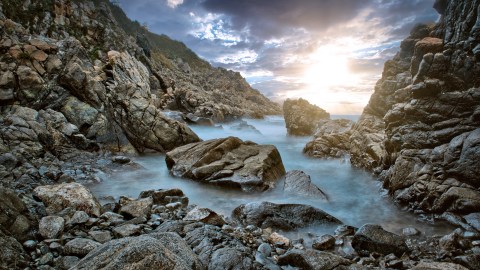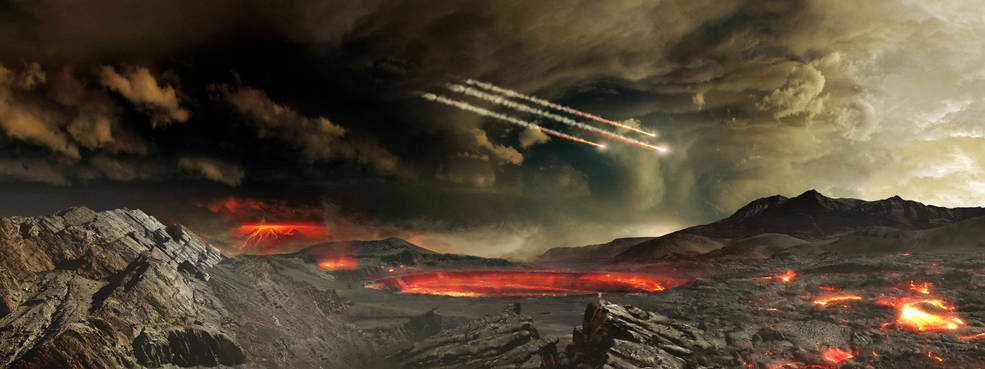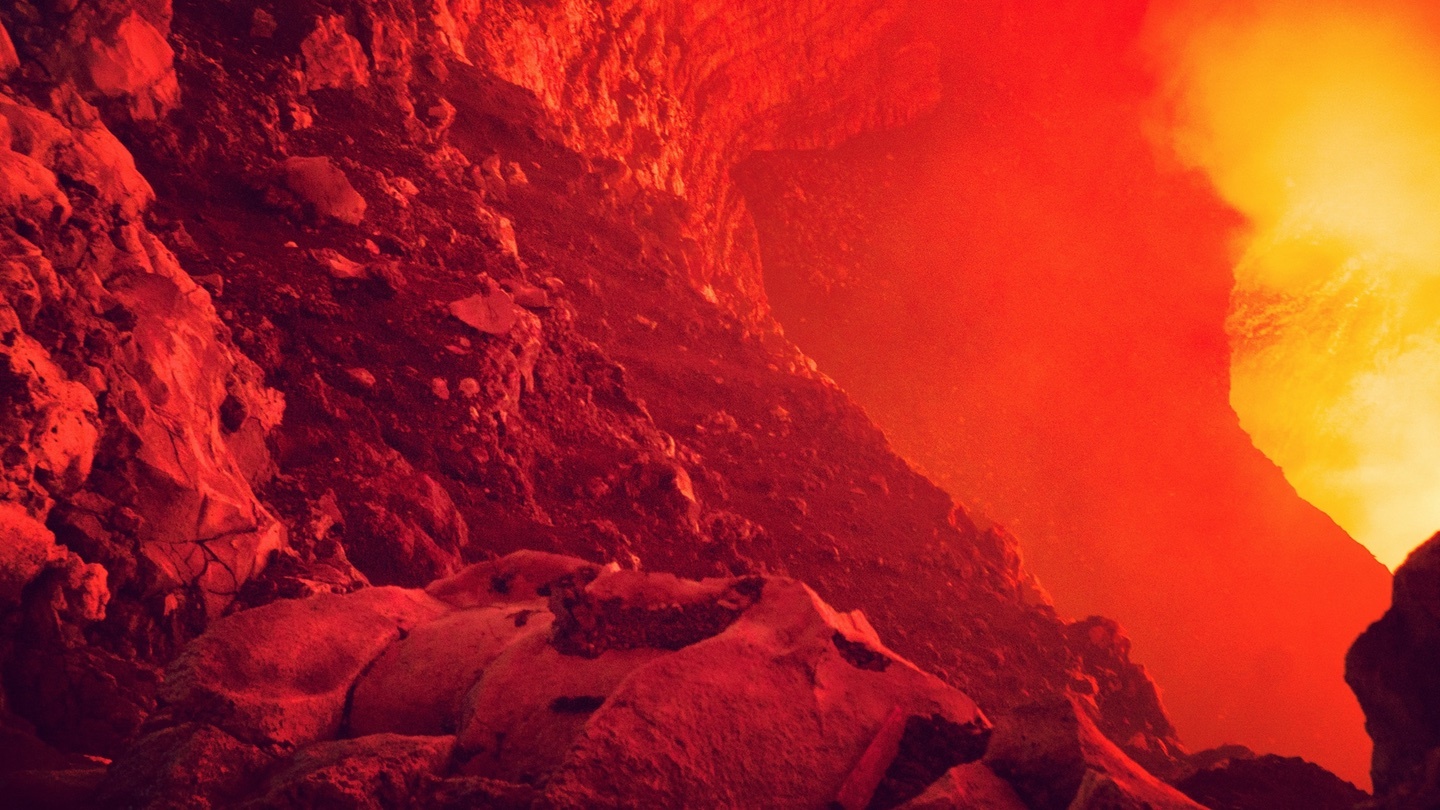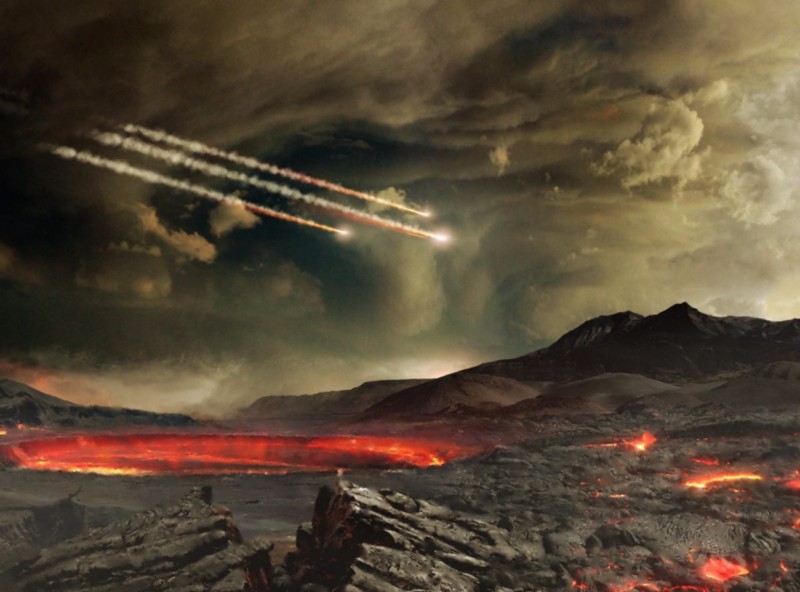Three places on Earth where life might have started

- Earth is teeming with life, but it wasn’t always that way. Barring an extraterrestrial source, where did it begin on our planet?
- Looking at its chemical makeup, we can surmise that the first life required certain basic ingredients and some sort of “spark.”
- Hydrothermal vents in the deep ocean, shallow ponds on the surface, and subterranean systems below impact craters are the likeliest locations.
Our planet is the only place in the Universe known to harbor life, and from the microscopic to the gargantuan, it is positively teeming with it. Yet despite life’s ubiquity, we still aren’t certain where exactly it began. Looking at the chemical makeup of life, we can surmise that the first life required basic ingredients and some sort of “spark.” Here are the three likeliest origins:
1. Hydrothermal vents. At the bottom of the ocean, there are cracks in the seafloor from which spew a scalding slurry of water, methane, ammonia, hydrogen compounds, and more. It was around these fissures that billions of years ago nitrogenous oxides in seawater could have reacted in the mishmash of up to 400° C heat with copious elements to create life’s molecular building blocks: amino acids and proteins.
In 2019, researchers from University College London announced that they had created protocells, “self-organized, endogenously ordered, spherical collections of lipids” in a simulated hydrothermal vent environment in the laboratory. A protocell isn’t life, but it is a forerunner.
Scientists have discovered highly concentrated systems of hydrothermal vents. One such system, composed of vents called “white smokers,” is known as the Lost City Complex. The area could be the most realistic approximation of a vent system on early Earth, with a seafloor thought to be nearly identical to what was present during the Hadean Eon, the geologic time on Earth lasting from the planet’s formation until about four billion years ago. The Lost City Complex is teeming with strange life entirely unreliant upon the sunlit surface.
2. Shallow ponds. Diminutive ponds, perhaps between 10 and 100 centimeters deep, might have been more hospitable to the launch of life than the oceans, an MIT team reported in 2019. With significantly smaller volumes, shallow ponds could have accumulated nitrogen oxides from the atmosphere and phosphorus from lightning strikes in far greater concentrations than the seas ever could. These compounds could then interact with RNA — a molecule present in all living cells — to form the very first lifeforms.
3. Comet impacts. Between 3.8 and 4.1 billion years ago, it’s hypothesized that Earth was pelted by asteroids and comets in an event known as the Late Heavy Bombardment. Most comets contain all the ingredients for amino acids — the building blocks of proteins — including molecules like methane, carbon dioxide, ammonia, and water ice. When a comet slams into Earth’s surface, a massive amount of energy is released (and that’s putting it mildly).
“That energy can go into rearranging molecules into higher energy states,” Sukrit Ranjan, an assistant professor in astrobiology at the University of Arizona, told Inverse.
In 2020, a team of scientists discovered evidence of ancient microbes 1.3 kilometers below the Chicxulub impact crater, the scar left by the asteroid strike that eradicated the dinosaurs. When that huge hunk of space rock slammed into what is now Mexico’s Yucatán Peninsula, it fractured the ground rock and created subterranean systems, which in turn were fertilized by hydrothermal fluids and any organics present in the asteroid.
During the Late Heavy Bombardment, collisions like Chicxulub were happening all the time, hinting that life on Earth might just have begun with a BOOM!





